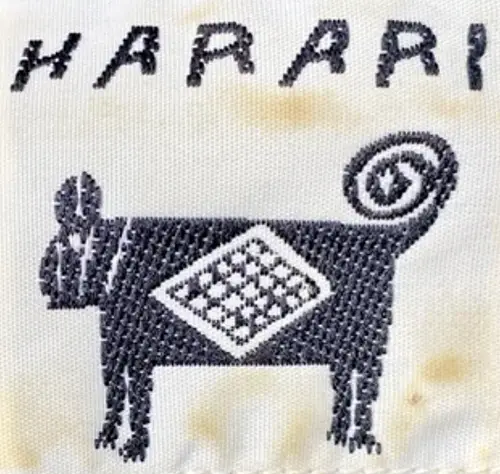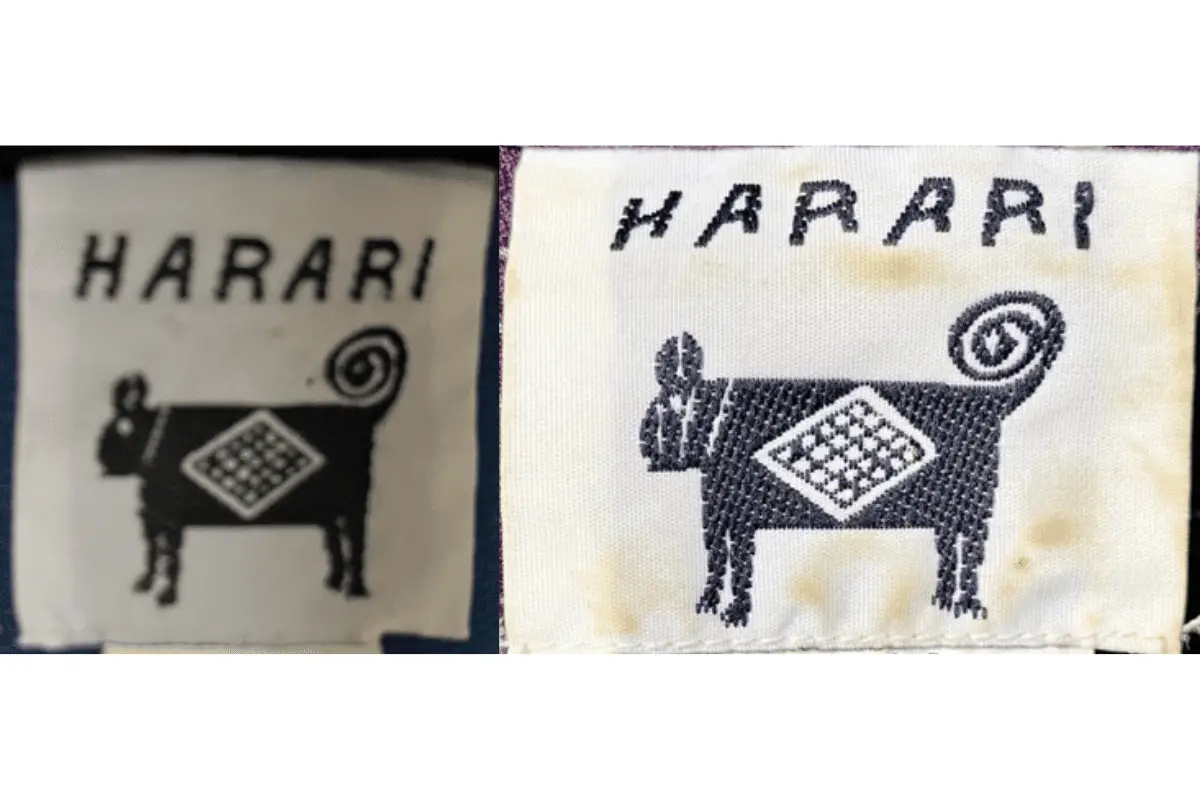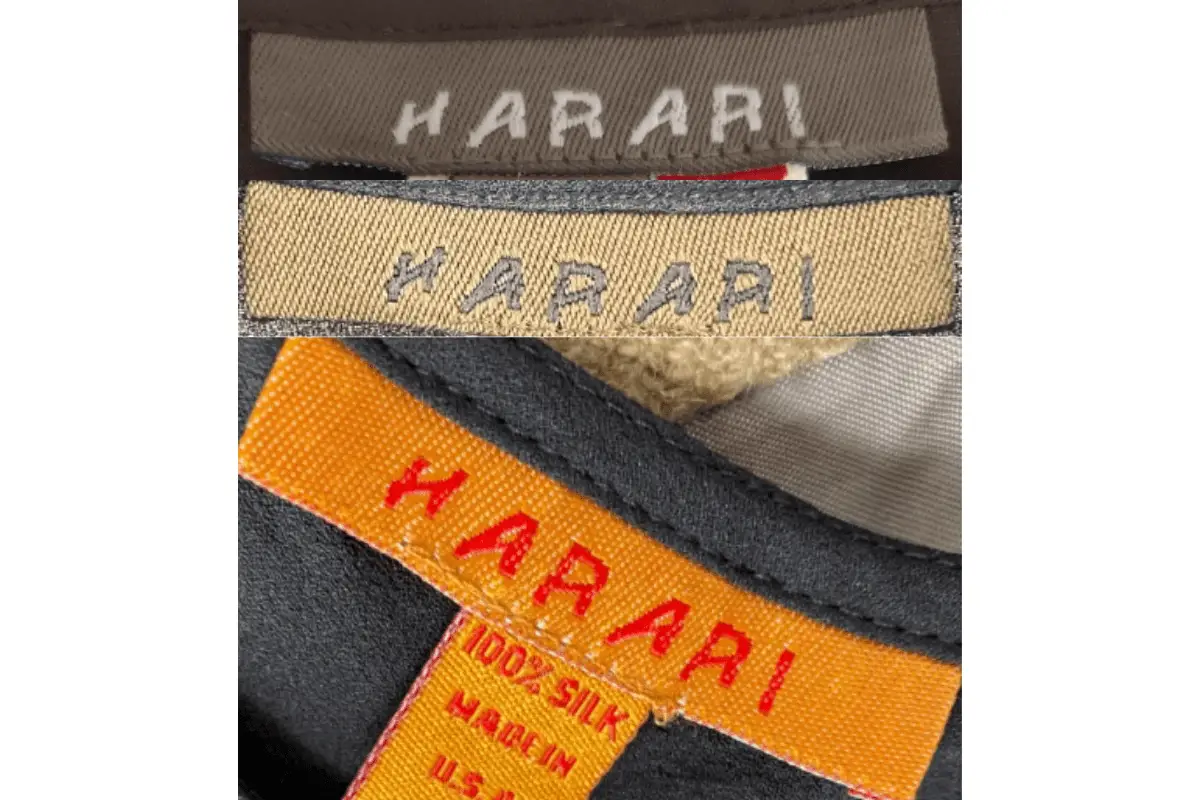Harari, the brainchild of Barbara Keller and Dan Harari, was born out of a mutual passion for world travel, art, and the allure of vintage fashion. Founded in 1979 after a fateful meeting at a flea market, the brand quickly grew into a renowned name in boho chic and exotic, globally inspired fashion. Keller, the creative force behind the label, drew from her love of Japanese kimonos and her experiences in far-flung cultures, blending these influences into her clothing designs. Dan Harari, serving as the financier, helped establish the brand’s roots in Beverly Hills, where their first store became a local landmark for the fashion-forward.
Throughout the 1980s and 1990s, Harari flourished, known not just for its unique, eclectic clothing but also for hand-loomed sweaters, scarves, and jewelry. These items were often produced in collaboration with local and international artisans, giving each piece a distinctive, handcrafted feel. The brand’s aesthetic, a blend of bohemian and worldly elegance, resonated deeply with its clientele. Harari’s distinctive style gained visibility when actress Lily Tomlin donned their pieces in her portrayal of Frankie in *Grace and Frankie*, cementing its reputation as a go-to label for those seeking advanced style and creative expression through fashion.
Despite its success, Harari closed its doors in the wake of the COVID-19 pandemic after nearly 30 years of business. The closure coincided with Keller and Harari’s decision to retire, marking the end of an era for the beloved brand. Today, Harari pieces are highly sought after by vintage clothing enthusiasts, with the brand’s rich history and distinctive designs living on in the world of sustainable and collectible fashion.
60s Fashion in London’s King Street
How to tell if Harari is vintage from the logo
Harari, known for its intricate, artistic designs, has produced a variety of distinctive logos over the years. Identifying a vintage Harari piece from its logo is essential for collectors and fashion enthusiasts alike. This guide helps you determine if your Harari garment is vintage based on the logo from the era attached below.
1990s to 2000s Harari logo
- The Harari logo during this period features a unique animal-like emblem, which resembles a stylized, artistic dog.
- The stitching is highly detailed, with a checkerboard pattern on the body of the animal and a curled tail, giving it a distinctive, handcrafted appearance.
- The text “HARARI” is written in an artistic, irregular font, adding to the overall handcrafted aesthetic typical of the brand during this era.
- The logo captures the artisanal and ethnic inspiration that was central to Harari’s designs during the late 20th century.
- This logo is typically found on clothing from the 1990s through the early 2000s, a hallmark of vintage Harari pieces.

1990s to 2000s Harari logo
How to tell if Harari is vintage from the tags
Harari is known for its elegant and artistic designs, and the evolution of its garment tags reflects the brand’s aesthetic and production trends through the decades. Identifying vintage Harari pieces can be done by closely examining the tags, which have seen shifts in both design and material over the years. Below is a guide to recognizing Harari vintage tags from different eras based on the provided images.
Having trouble identifying vintage tags or labels? Upload a picture on our vintage tag identification page, and we’ll assist you!
1990s vintage Harari tags
- Bold “HARARI” lettering in an angular font style, characteristic of the era.
- Neutral-colored fabric tags with white and beige backgrounds.
- Often embroidered or stitched lettering, creating a textured look on the tags.
- Simple, minimalist design with no additional symbols or illustrations.

1990s Harari tags
2000s vintage Harari tags
- Distinctive bright orange background with contrasting red “HARARI” lettering.
- Material tag includes fiber content (e.g., “100% Silk”) and country of origin (“Made in U.S.A.”).
- Tag design includes more modern elements, such as bold colors and clean lines.
- Clear focus on product details like material and manufacturing origin, signaling a transition to a more global market.

2000s Harari tags



